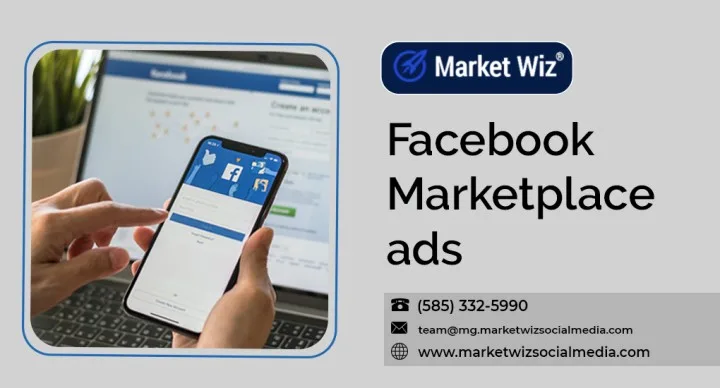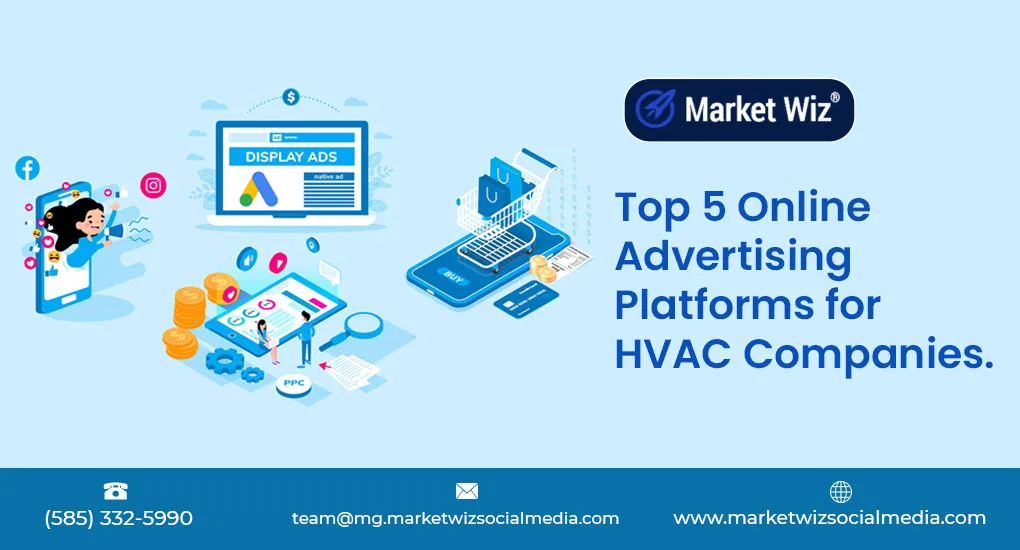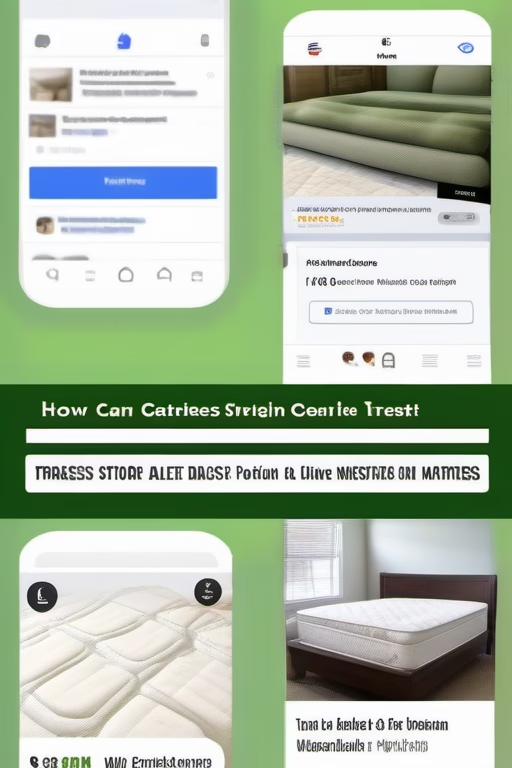Top Platforms for Selling Used and New Fitness Gear
In the dynamic world of fitness, selling both new and used equipment effectively can significantly impact your business's success. With the rise of online marketplaces and specialized platforms, understanding where and how to sell your fitness gear is crucial. This comprehensive guide explores the top platforms for selling used and new fitness equipment, providing strategies to maximize your sales and reach a broader audience.
Table of Contents
2. Top Platforms for Selling New Fitness Gear
Selling new fitness gear requires platforms that offer extensive reach, robust tools, and reliable customer support. Here are the top platforms to consider:
2.1 Amazon
Amazon is the largest online marketplace globally, providing unparalleled exposure for your new fitness gear. Its vast customer base and trusted platform make it an ideal choice for sellers.
- Pros: Massive audience reach, robust fulfillment services (FBA), reliable customer trust.
- Cons: High competition, fees can be substantial, strict policies.
- Best For: Brands looking to scale quickly and leverage Amazon's logistics.
- Example: "List your new adjustable dumbbells on Amazon to reach millions of potential customers and utilize Amazon FBA for streamlined shipping and customer service."
2.2 Shopify
Shopify is a leading eCommerce platform that allows you to create a customized online store for your fitness gear. It offers a range of tools to manage inventory, process payments, and market your products effectively.
- Pros: Highly customizable, extensive app ecosystem, strong support for SEO.
- Cons: Monthly fees, requires more effort in driving traffic compared to marketplaces.
- Best For: Brands that want full control over their online presence and customer experience.
- Example: "Build a dedicated online store for your fitness equipment on Shopify, using apps like Oberlo for inventory management and Mailchimp for email marketing."
2.3 eBay
eBay is a well-established platform that caters to both new and used items. Its auction-style listings and fixed-price options provide flexibility in how you sell your fitness gear.
- Pros: Diverse customer base, flexible selling formats, international reach.
- Cons: Listing fees, competition from individual sellers, potential for counterfeit issues.
- Best For: Sellers who want to offer unique or specialized fitness equipment and reach a global audience.
- Example: "Use eBay's auction feature to sell limited edition fitness equipment, attracting bidders interested in exclusive items."
2.4 WooCommerce
WooCommerce is a free WordPress plugin that transforms your website into a fully functional eCommerce store. It offers extensive customization options and integrates seamlessly with various payment gateways and shipping providers.
- Pros: Free to use, highly customizable, large community support.
- Cons: Requires WordPress knowledge, potential for higher maintenance, additional costs for extensions.
- Best For: Businesses already using WordPress or those seeking a highly customizable eCommerce solution.
- Example: "Install WooCommerce on your WordPress site to create a personalized store for your new fitness gear, integrating with plugins like WooCommerce Subscriptions for recurring sales."
2.5 BigCommerce
BigCommerce is a powerful eCommerce platform designed for growing businesses. It offers a range of built-in features, including advanced SEO tools, multi-channel selling, and seamless integrations with popular apps.
- Pros: Scalable for growth, comprehensive built-in features, strong SEO capabilities.
- Cons: Higher pricing tiers, less flexibility in customization compared to Shopify.
- Best For: Medium to large businesses looking for a scalable and feature-rich eCommerce platform.
- Example: "Leverage BigCommerce's multi-channel selling to list your fitness gear on platforms like Amazon and eBay directly from your BigCommerce dashboard."
3. Top Platforms for Selling Used Fitness Gear
Selling used fitness gear requires platforms that cater to secondhand markets and provide trust mechanisms to ensure smooth transactions. Here are the top platforms to consider:
3.1 Facebook Marketplace
Facebook Marketplace is a popular platform for buying and selling used items locally. Its integration with Facebook profiles adds a layer of trust and ease of communication between buyers and sellers.
- Pros: Large local audience, no listing fees, easy communication through Facebook Messenger.
- Cons: Limited to local sales, potential for scams, requires Facebook account.
- Best For: Selling used fitness gear quickly within your local community.
- Example: "List your used treadmill on Facebook Marketplace, enabling local buyers to view and purchase without worrying about shipping logistics."
3.2 Craigslist
Craigslist is one of the oldest online classifieds platforms, offering a straightforward way to list used fitness equipment for sale in your local area.
- Pros: Free listings, wide reach within local areas, simple to use.
- Cons: Minimal buyer protection, potential for spam or scams, lacks advanced features.
- Best For: Quick local sales of used fitness gear without any additional costs.
- Example: "Post your used resistance bands on Craigslist to attract buyers in your city looking for affordable fitness solutions."
3.3 OfferUp
OfferUp is a mobile-centric marketplace designed for local buying and selling. It offers user ratings and secure messaging to enhance trust between buyers and sellers.
- Pros: Mobile-friendly, built-in user ratings, secure messaging.
- Cons: Fees for promoted listings, limited to local sales, competition from other sellers.
- Best For: Mobile-savvy sellers looking to reach local buyers efficiently.
- Example: "Use OfferUp to list your used yoga mats, taking advantage of the app's user ratings to build trust with potential buyers."
3.4 Letgo
Letgo is a peer-to-peer marketplace focused on local sales of secondhand items. It offers a user-friendly interface and features like in-app messaging to facilitate transactions.
- Pros: User-friendly, no listing fees, visual search with image recognition.
- Cons: Limited to local sales, potential for low visibility on competitive listings.
- Best For: Selling a variety of used fitness gear quickly within your local area.
- Example: "List your used kettlebells on Letgo, utilizing the app's image recognition to ensure your items are easily discoverable."
3.5 ThredUP
ThredUP is a specialized platform for selling high-quality secondhand items, including fitness apparel and gear. It offers a curated marketplace, ensuring a premium experience for buyers and sellers.
- Pros: Curated marketplace, quality control, offers up to 80% of the selling price.
- Cons: Selective acceptance process, fees for certain items, longer selling time.
- Best For: Selling used fitness apparel and gear that meets quality standards.
- Example: "Sell your gently used fitness leggings on ThredUP, benefiting from the platform's curated selection and trusted buyer base."
4. Specialized Platforms for Fitness Gear
For those looking to sell both new and used fitness equipment, specialized platforms offer tailored features and a focused audience, enhancing the selling experience.
4.1 Gym Swap
Gym Swap is a niche marketplace dedicated to buying and selling used gym equipment. It caters specifically to fitness enthusiasts, ensuring a targeted audience for your listings.
- Pros: Targeted audience, dedicated platform for gym equipment, community-driven.
- Cons: Smaller user base compared to general marketplaces, fees for premium listings.
- Best For: Sellers with specialized gym equipment looking to reach dedicated fitness enthusiasts.
- Example: "List your used rowing machines on Gym Swap to connect with serious athletes seeking quality equipment."
4.2 Play It Again Sports
Play It Again Sports is a well-known franchise that buys and sells used and new sporting goods, including fitness equipment. It offers both online and physical store options, providing flexibility for sellers.
- Pros: Established brand, both online and offline presence, trusted by consumers.
- Cons: Franchise fees, may require physical drop-off for used items, limited to certain locations.
- Best For: Sellers who prefer a trusted brand and want options to sell both online and in-store.
- Example: "Sell your used fitness trackers through Play It Again Sports' online portal or visit a local store for in-person transactions."
4.3 Fitness Equipment Marketplaces
Several online marketplaces specialize in fitness equipment, offering features tailored to the needs of sellers and buyers in this niche.
- Pros: Targeted audience, specialized listing features, higher conversion rates.
- Cons: May have listing fees, smaller reach compared to general marketplaces.
- Best For: Sellers with a wide range of fitness equipment seeking a focused marketplace.
- Example: "Use a specialized fitness equipment marketplace to list your new and used kettlebells, ensuring visibility among dedicated fitness professionals and enthusiasts."
5. Comparison of Platforms
Choosing the right platform to sell your fitness gear involves evaluating various factors. Here's a comparison of key aspects across the top platforms:
5.1 Fees
Understanding the fee structures of different platforms is essential for budgeting and maximizing profits.
- Amazon: Charges referral fees (typically 8-15%) and fees for Fulfillment by Amazon (FBA).
- Shopify: Monthly subscription fees starting at $29, with additional costs for apps and payment processing.
- eBay: Listing fees and final value fees based on the sale price.
- Facebook Marketplace: Generally free for local sales, with fees for certain categories and promoted listings.
- Craigslist: Mostly free, but charges fees for certain types of listings and larger cities.
- Example: "While Amazon offers extensive reach, the higher referral and FBA fees may impact your profit margins compared to platforms like Craigslist, which are mostly free."
5.2 Audience Reach
The size and specificity of the audience on each platform can influence your sales potential.
- Amazon: Global reach with millions of active users.
- Facebook Marketplace: Large local audience with the potential for viral sharing.
- eBay: International reach with a diverse buyer base.
- Shopify: Depends on your marketing efforts and SEO; inherently limited to your own traffic unless actively promoted.
- Example: "Amazon's vast global audience offers significant sales potential, but competing against numerous sellers requires strategic differentiation."
5.3 Ease of Use
Ease of use includes factors like listing process, user interface, and available support.
- Amazon: Comprehensive tools but can be complex for new sellers.
- Shopify: User-friendly with drag-and-drop features and extensive support resources.
- eBay: Simple listing process with flexible selling options.
- Facebook Marketplace: Extremely easy to list items through the mobile app.
- Craigslist: Very straightforward but lacks advanced features.
- Example: "Shopify's intuitive interface makes it easy to set up and manage your online store, even if you're new to eCommerce."
6. Strategies for Maximizing Sales
To successfully sell your fitness gear on various platforms, implementing effective strategies is essential. Here are key strategies to consider:
6.1 Listing Optimization
Optimizing your listings ensures they stand out and attract potential buyers. Focus on the following elements:
- High-Quality Images: Use clear, high-resolution photos from multiple angles to showcase your fitness gear.
- Detailed Descriptions: Provide comprehensive information about the product, including specifications, features, and benefits.
- Keywords: Incorporate relevant keywords in your title and description to improve search visibility.
- Example: "Include detailed specs like weight capacity, dimensions, and material quality in your treadmill listing to inform and attract serious buyers."
6.2 Pricing Strategies
Effective pricing strategies can make your listings more attractive and competitive.
- Competitive Pricing: Research similar listings to price your fitness gear competitively.
- Bundling: Offer bundles or packages to provide more value and increase the perceived worth.
- Discounts and Promotions: Utilize discounts, limited-time offers, and promotional pricing to drive urgency.
- Example: "Bundle a set of resistance bands with a yoga mat at a discounted price to encourage larger purchases."
6.3 Marketing Tips
Enhance your visibility and attract more buyers through effective marketing techniques.
- Social Media Marketing: Promote your listings on social media platforms to reach a broader audience.
- Email Marketing: Use email campaigns to notify subscribers about new listings or special offers.
- SEO: Optimize your product pages and listings for search engines to increase organic traffic.
- Example: "Share your new yoga gear listings on Instagram and Facebook with engaging visuals and relevant hashtags to attract fitness enthusiasts."
7. Legal Considerations
When selling fitness gear, especially used equipment, it's important to be aware of legal considerations to protect your business and ensure compliance with regulations.
7.1 Warranty and Return Policies
Clearly outline your warranty and return policies to provide assurance to buyers and protect against disputes.
- Warranty Terms: Specify the duration and coverage of any warranties offered with new or used fitness gear.
- Return Policies: Define the conditions under which returns are accepted, including timeframes and the state of the product.
- Example: "Offer a 30-day return policy for all used fitness equipment, provided it is in the original condition and packaging."
7.2 Shipping and Handling
Establish clear shipping and handling procedures to ensure smooth transactions and customer satisfaction.
- Shipping Options: Offer multiple shipping options, including standard, expedited, and international shipping.
- Packaging Standards: Use appropriate packaging materials to protect fitness gear during transit.
- Tracking and Insurance: Provide tracking information and consider offering shipping insurance for high-value items.
- Example: "Partner with reliable shipping carriers to offer tracking and insurance for all your high-end fitness equipment shipments."
7.3 Tax Obligations
Understand and comply with tax obligations related to selling fitness gear, both new and used.
- Sales Tax: Determine if you need to collect sales tax based on your location and the jurisdictions you sell to.
- Income Tax: Report your sales income accurately on your tax returns.
- Example: "If you're selling used fitness equipment through multiple states, ensure you comply with each state's sales tax regulations."
8. Conclusion
Selling both new and used fitness gear successfully requires selecting the right platforms, optimizing your listings, implementing effective pricing and marketing strategies, and adhering to legal considerations. By leveraging the top platforms discussed in this guide and applying the strategies outlined, you can maximize your sales, reach a wider audience, and build a reputable brand in the fitness equipment market.
Remember, the key to success lies in understanding your target audience, providing excellent customer service, and continuously optimizing your approach based on performance data and market trends. With dedication and the right tools, your fitness gear business can thrive in the competitive online marketplace.
Frequently Asked Questions (FAQ)
1. What are the best platforms for selling new fitness gear?
The best platforms for selling new fitness gear include Amazon, Shopify, eBay, WooCommerce, and BigCommerce. These platforms offer extensive reach, robust tools, and various features to help you maximize your sales.
2. How can I effectively sell used fitness equipment online?
To effectively sell used fitness equipment online, use platforms like Facebook Marketplace, Craigslist, OfferUp, Letgo, and specialized marketplaces like Gym Swap. Ensure your listings are detailed, use high-quality images, and price your items competitively.
3. What should I include in my fitness gear listings?
Your fitness gear listings should include high-quality images from multiple angles, detailed descriptions, specifications, condition (for used items), pricing, shipping options, and any warranties or return policies.
4. Are there any fees associated with selling on these platforms?
Yes, most platforms have fees associated with selling. For example, Amazon charges referral and FBA fees, eBay charges listing and final value fees, and Shopify has monthly subscription fees. It's important to understand each platform's fee structure to price your items accordingly.
5. How do I determine the right price for my fitness equipment?
Determine the right price by researching similar listings, considering the condition and age of the equipment (for used items), and factoring in platform fees. Competitive pricing can help attract more buyers while ensuring you maintain a reasonable profit margin.
6. Can I sell both used and new fitness gear on the same platform?
Yes, many platforms like eBay, Amazon, and Facebook Marketplace allow you to sell both used and new fitness gear. However, specialized platforms may focus more on one category, so it's important to choose the right platform based on your inventory.
7. What are some tips for taking great photos of fitness equipment?
Use a clean, well-lit environment, take photos from multiple angles, highlight key features, ensure the equipment is clean and presentable, and use a high-resolution camera to capture clear images.
8. How important are customer reviews in selling fitness gear?
Customer reviews are extremely important as they build trust and credibility. Positive reviews can influence potential buyers' decisions and enhance your reputation, leading to increased sales.
9. Should I offer shipping or local pickup for my fitness equipment?
Offering both shipping and local pickup options can cater to a wider range of buyers. Local pickup can be convenient for heavy items, while shipping expands your potential customer base geographically.
10. How can I market my fitness gear listings to reach more buyers?
Utilize social media marketing, SEO optimization, email campaigns, and paid advertising to market your fitness gear listings. Engaging with fitness communities and influencers can also help increase visibility.
11. What are the benefits of using specialized platforms for fitness gear?
Specialized platforms offer a targeted audience, tailored features, and a focused community, which can lead to higher conversion rates and better sales performance compared to general marketplaces.
12. How do I handle returns and refunds when selling fitness equipment?
Establish clear return and refund policies before listing your items. Ensure that your policies are communicated clearly in your listings and are compliant with the platform's guidelines. Handle returns promptly and professionally to maintain customer satisfaction.
13. Can I sell international shipments of fitness gear?
Yes, many platforms support international shipments. However, you need to consider additional factors such as shipping costs, import duties, and potential delays. Ensure that you comply with international shipping regulations and clearly communicate shipping terms to buyers.
14. What payment methods should I accept when selling fitness gear?
Accept multiple payment methods such as credit/debit cards, PayPal, and other secure online payment systems to accommodate different buyer preferences and increase the likelihood of sales.
15. How can I build trust with potential buyers?
Build trust by providing accurate and honest descriptions, offering clear and high-quality photos, responding promptly to inquiries, maintaining positive reviews, and ensuring secure payment and shipping processes.
16. What should I do if a buyer leaves negative feedback?
Respond professionally and promptly to negative feedback. Address the buyer's concerns, offer solutions or refunds if necessary, and use the feedback to improve your products and services.
17. Is it better to list multiple items together or individually?
It depends on the platform and the items. Listing items individually can provide detailed information and attract specific buyers, while bundling can offer more value and increase the overall sale price.
18. How can I stay competitive in the fitness gear market?
Stay competitive by keeping your prices reasonable, offering high-quality products, providing excellent customer service, continuously updating your inventory, and leveraging effective marketing strategies to reach your target audience.
19. What role does SEO play in selling fitness equipment online?
SEO enhances the visibility of your listings in search engine results, driving organic traffic to your listings. Proper keyword usage, optimized descriptions, and high-quality images can improve your SEO and attract more potential buyers.
20. How do I choose the right platform for my fitness gear business?
Consider factors such as your target audience, product type, budget, ease of use, fees, and the platform's reputation. Research each platform's strengths and weaknesses to determine which aligns best with your business goals.
21. Can I sell both small and large fitness equipment on the same platform?
Yes, many platforms support the sale of both small and large fitness equipment. However, consider the platform's policies on item size, shipping logistics, and listing formats to ensure a smooth selling process.
22. How important is customer service in selling fitness gear?
Customer service is crucial as it influences buyer satisfaction, repeat business, and positive reviews. Promptly address inquiries, handle issues professionally, and ensure a smooth transaction process to enhance customer experience.
23. Should I use professional photos or can I use smartphone photos?
While smartphone photos can be sufficient, professional photos typically offer better quality and presentation, making your listings more attractive and credible to potential buyers.
24. How can I leverage social media to sell my fitness gear?
Use social media platforms to showcase your fitness gear, engage with fitness communities, run targeted ads, and share customer testimonials and user-generated content to drive traffic to your listings.
25. What are some effective marketing strategies for selling fitness gear online?
Effective marketing strategies include optimizing your listings for SEO, utilizing social media marketing, running targeted ads, leveraging email marketing, engaging with influencers, and encouraging customer reviews and testimonials.
25 Relevant Keywords
- Selling Fitness Gear
- Used Fitness Equipment
- New Fitness Gear
- Best Platforms for Fitness Gear
- Online Fitness Equipment Sales
- Marketplace Fitness Equipment
- eCommerce Fitness Gear
- Secondhand Fitness Gear
- Fitness Gear Resale
- Top Fitness Selling Platforms
- Fitness Equipment Marketplaces
- Sell Gym Equipment Online
- Fitness Gear Trading
- Fitness Equipment Resale Sites
- Best Online Marketplaces Fitness
- Fitness Gear Listings
- Sell Used Weights
- Sell New Treadmills
- Fitness Gear Online Stores
- Fitness Equipment Selling Tips
- Marketplace for Fitness Gear
- Fitness Gear Resale Strategies
- Online Selling Fitness Equipment
- Fitness Gear Selling Platforms
- Best Places to Sell Fitness Gear
- Sell Used Gym Equipment

















